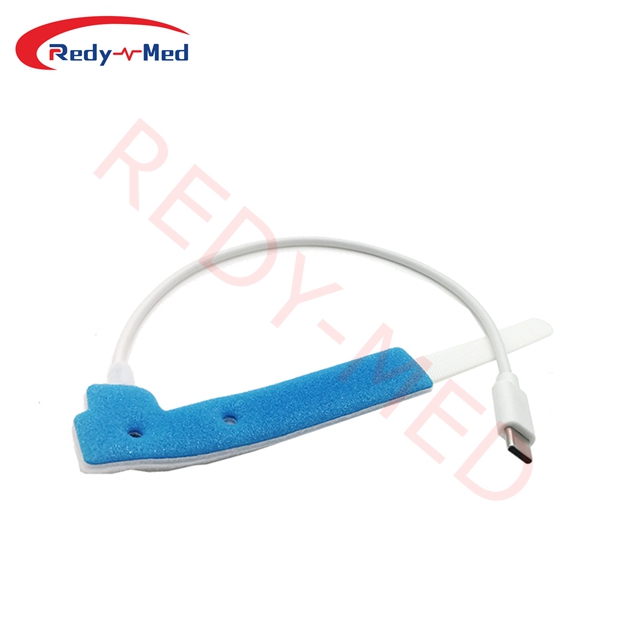
How much does a disposable blood oxygen saturation sensor cost?
2024-03-21 00:04:21
How much does a disposable blood oxygen saturation sensor cost? Understand the advantages and disadvantages and choose the appropriate product. With the continuous development of medical technology, disposable blood oxygen saturation sensors are increasingly used in the medical field. These sensors can monitor patients' blood oxygen saturation levels in real time, which is important for timely detection and treatment of potential health problems. However, when purchasing disposable blood oxygen saturation sensors, many people tend to focus on the price factor and ignore other important aspects. Redy-Med Disposable SpO2 Sensor Manufacturer will introduce in detail the definition, principle, classification, application scenarios and price of disposable blood oxygen saturation sensors to help you understand what you should pay attention to when purchasing.
1. Definition and principle of disposable blood oxygen saturation sensor
A disposable blood oxygen saturation sensor is a device used to monitor the oxygen saturation in human blood. It uses a non-invasive detection method to place the sensor probe on a designated part of the patient's body, such as fingers, earlobes, etc., uses infrared light or red light to illuminate the inside of the human body, and measures the intensity of the light after it penetrates, thereby calculating blood oxygen saturation.
In the medical field, blood oxygen saturation is a very important physiological indicator, which reflects the patient's respiratory system function and blood circulation. By monitoring blood oxygen saturation, doctors can promptly detect hypoxia or hypoxemia in patients so that appropriate treatment measures can be taken.
2. Classification and comparison of disposable blood oxygen saturation sensors
Disposable blood oxygen saturation sensors can be divided into different types according to different classification methods. Common classification methods include detection principles, parts of use, applicable groups, etc. The following is a classification and comparison of disposable blood oxygen saturation sensors based on detection principles.
According to the detection principle, disposable blood oxygen saturation sensors can be divided into two types: invasive and non-invasive. Invasive sensors are inserted into blood vessels inside the human body to directly measure oxygen saturation in the blood. This method is more accurate, but involves certain risks. Non-invasive sensors calculate blood oxygen saturation by illuminating the light transmittance of designated parts of the human body. This method is simple and easy to use, but the accuracy is slightly lower.
Invasive sensors can be divided into direct insertion type and intervening type according to the insertion method. In-line sensors are inserted directly into blood vessels and can quickly and accurately monitor blood oxygen saturation, but require strict disinfection to prevent infection. The interposition sensor reduces the impact on the patient by placing the fiber optic probe outside the blood vessel, but the accuracy is slightly lower than that of the in-line sensor.
Non-invasive sensors can be divided into finger cuff type, ear muff type and facial type according to the use part. Fingertip sensors are the most common, they are suitable for fingers and are easy to operate. Earmuff-type sensors are suitable for earlobes, and some products also have the function of automatically adjusting the detection location. Facial sensors are suitable for facial parts and can monitor multiple physiological parameters at the same time.
When selecting a disposable blood oxygen saturation sensor, multiple factors such as the applicable population, use site, accuracy, and price should be considered. For example, for vulnerable groups such as newborns, products that are less irritating to the skin and easy to use should be selected; for occasions where multiple physiological parameters need to be monitored simultaneously, products with multiple detection functions can be selected.
3. Application scenarios of disposable blood oxygen saturation sensors
Disposable blood oxygen saturation sensors are widely used in medical, health management and other fields. In the medical field, it is mainly used to monitor patients' blood oxygen saturation levels so that doctors can promptly detect and deal with conditions such as hypoxemia. At the same time, these sensors can also be used in conjunction with other medical equipment, such as monitors, ventilators, etc., to achieve comprehensive management of the patient's condition.
In the field of health management, disposable blood oxygen saturation sensors can help people understand their health status in real time and detect and prevent potential health problems in a timely manner. For example, the elderly or people with chronic diseases can monitor changes in their condition by regularly using an oximeter so that treatment plans and drug dosage can be adjusted in a timely manner.
4. Characteristics and significance of disposable blood oxygen saturation sensors
As an important medical device, the disposable blood oxygen saturation sensor has the characteristics of real-time monitoring, easy operation, and rapid response.
Get the latest price? We'll respond as soon as possible(within 12 hours)





